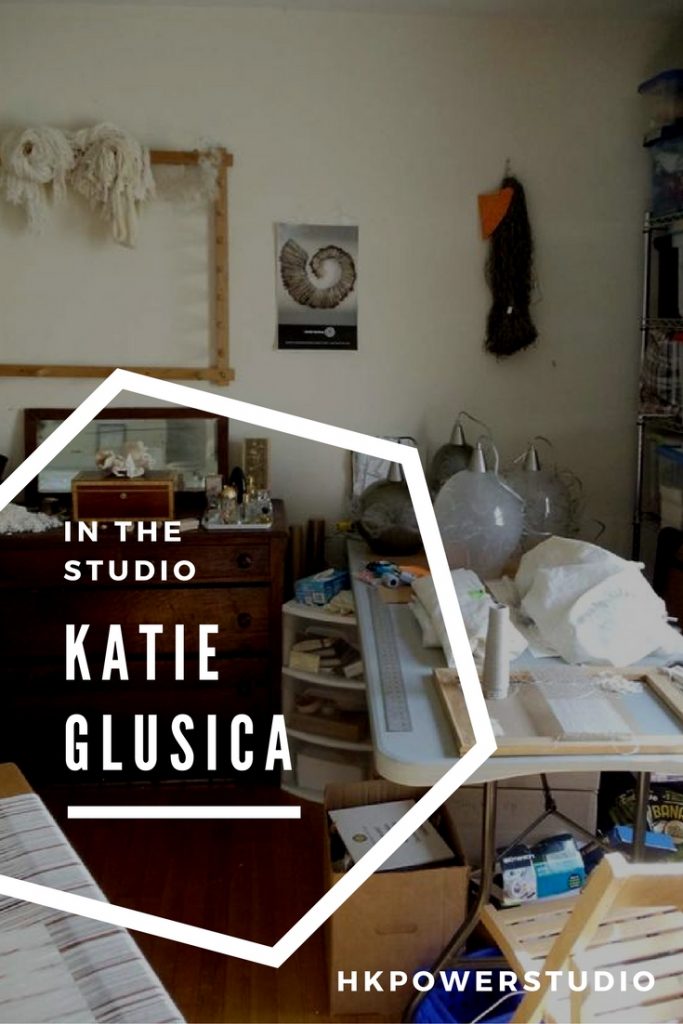Today we take a sneak peek In the Studio with Katie Glusica a textile artist and fellow SCAD Alumni. Katie and I have met at several SCAD Fibers Open Studio events and I’m fascinated by both her weaving and personal artwork and the work she does in rug restoration. Katie lives in Savannah GA and her studio is in her home. Thank you Katie for inviting us into your creative space!
HKPS::What age did you suspect or know you were an artist?
KG::It was my junior/senior year of high school when I decided to study art. Up until then, I was more interested in collecting rocks and science, which has become a big part of what conceptually feeds my practice. Once I was in college and began taking challenging art classes, I knew I was an artist. During my first textiles class I knew I was a weaver, but I always have been.
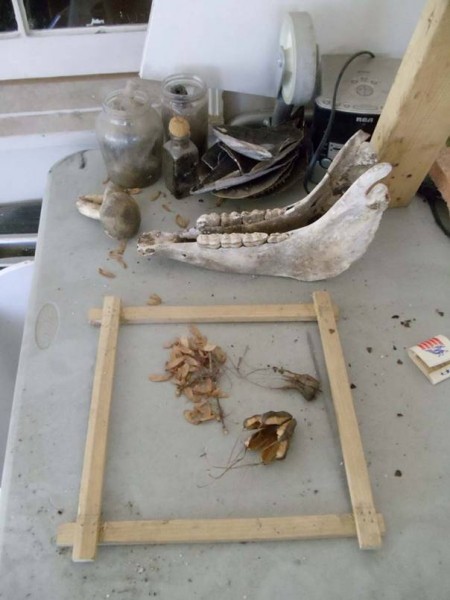
HKPS:: What mediums do you work with?
KG::I work in a wide range of mediums and techniques, but I am weaver regardless of the material or technique I am working in. In my current work I typically combine traditional and experimental materials like silk and nylon monofilament using my eight harness Gilmore loom. In my rug restoration work I use all natural materials, needles and frame looms. Recently, I am collaborating on a project involving glass and have been working in wood to create framed environments for some of my weavings. I try to keep up drawing, sketching and writing practices. I also love to cast things in latex and draw with oil.
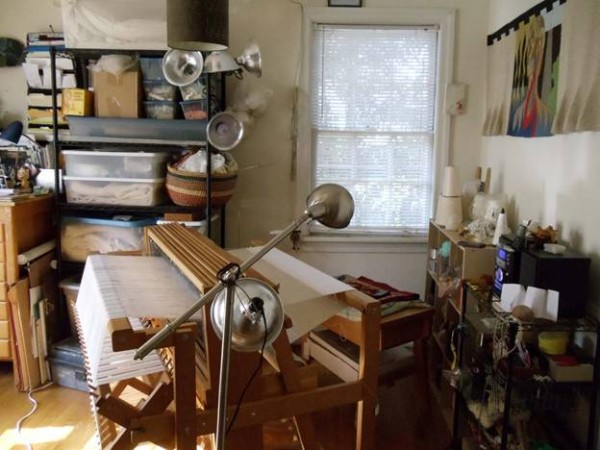
HKPS:: Where do you make your art, how big is your studio and how long have you been in this space?
KG::Currently, my weaving, etc. studio is in my home. The room is about fifteen by fifteen feet. And, usually expands into other parts of the home as needed. I have not yet done any casting in this studio. I have been working in this space, with this particular set up for about two or so years. My rug restoration studio is part of the antique furniture and rug store Savannah Galleries in downtown Savannah. There, I typically work at a six-foot (preferably eight-foot) table or on the floor, so the space I am using moves locations within the shop from time to time. I have been working there for six years.
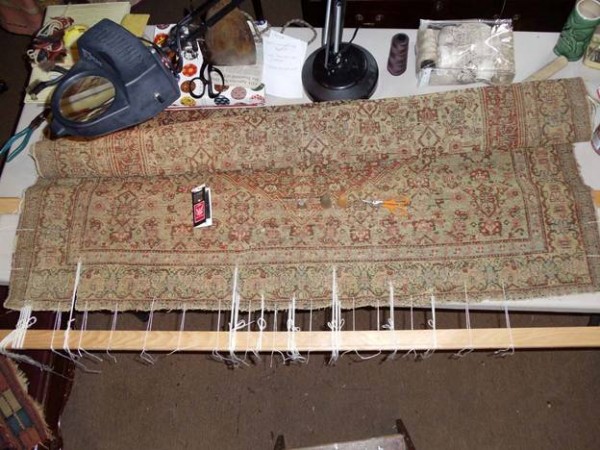
HKPS:: When you began working in this space did you plan any systems for the overall set up or did you let things evolve organically? How did past studio spaces or systems influence this space?
KG::From the very beginning, my studio spaces have all had the same basic set up, which is installed based on the space specifics, and evolves naturally from there. This same basic set up consists of an eight harness loom and necessary accessories, at least one shelving unit, plastic storage bins, a six to eight foot long table, a desk and clamp lights. Currently, I also have a chest of drawers, three shelving units and a chest. Oh, and there is always a stereo of some sort.
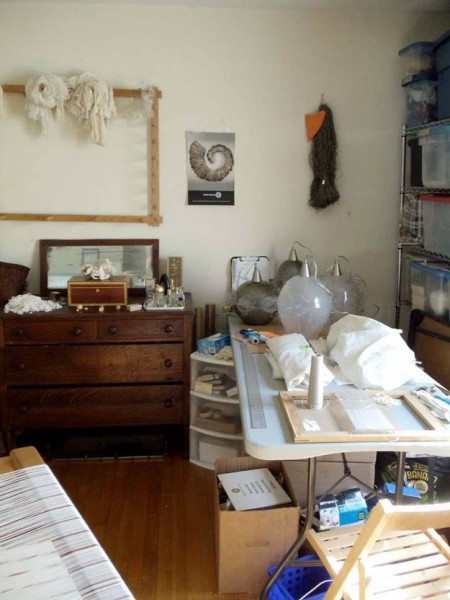
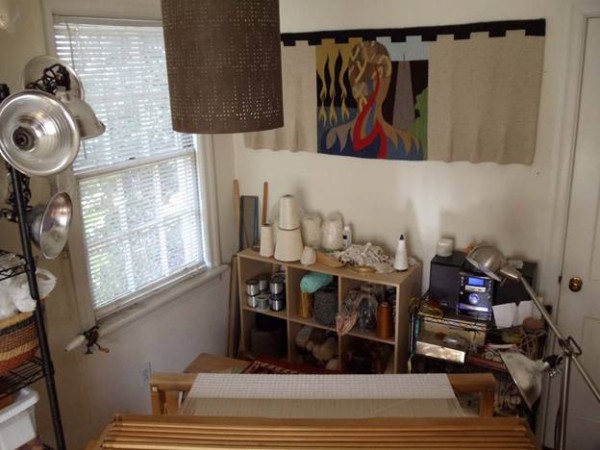
HKPS:: Do you consider yourself to be an organized person?
KG::Yes.
HKPS:: Have you ever worked with another artist or gallery? If so did you learn any systems for organizing?
KG::Yes, and I have taken note of the many different ways different people do things, kept what has worked for me and left the rest. One of the most important experiences I had as an art, specifically textiles, student was visiting my weaving professor’s studio. My basic set up is essentially modeled after hers (Susan Iverson). An important specific lesson from that first visit to a professional textile studio was to always use clear plastics bins to discourage moths, but keep your fabric away from light and dust wrapped in muslin!
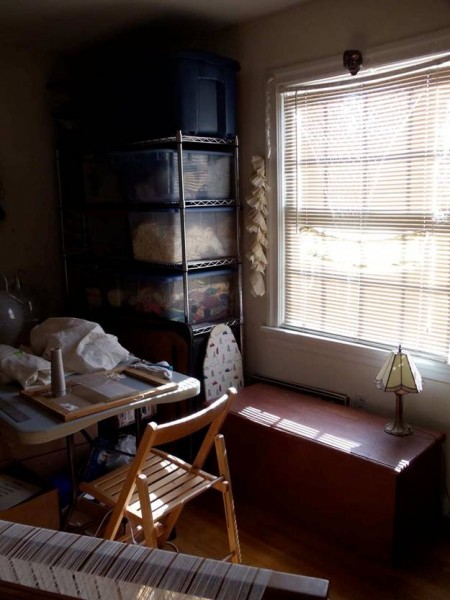
HKPS:: How or where else have you learn your organizing habits and systems ?
KG::I would say that my organizing habits started very early on, as a child, both my mother and father are very organized in their spaces and lets just say I used to have systems for eating cereal. This tendency towards order is likely what makes me an apt weaver. I do however stop organizing before it gets over-the-top because the studio is a place where I like to allow for a degree of chaos.
HKPS::What types of schedules, systems, tools or processes do you use to help maintain organization in your studio? Would you like to share any tips?
KG::I am a huge list maker. Lists, lists and more lists. Shelves, shelves and more shelves. Boxes. I use a lot of folders. I like Post-It notes, too. If you don’t have close to the same amount of things as you do places to put them, you can’t be well organized. The level of organization one needs is up to the individual. I keep only as many things on my plate as I can do well. Yet always keep enough going to make sure I have something to do. I try to keep cycles of work and applications going, trying for about three at a time…playing the odds. It is important to keep your computer files, images and C/V or resume names and places organized and backed up. There is always something on my loom and I consistently work through my different projects prioritizing them as needed, usually with Post-It notes.
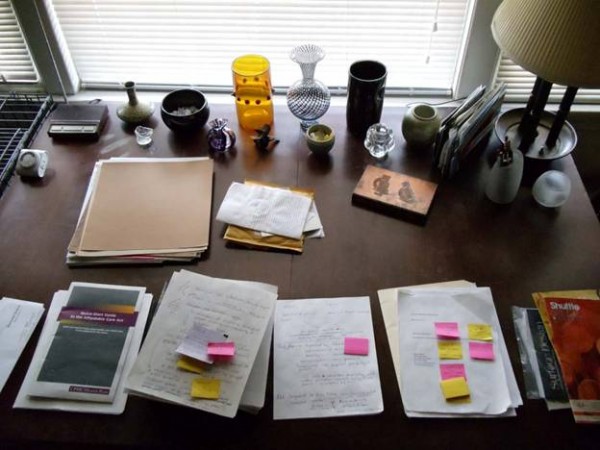
HKPS::What kinds of materials/tools do you find challenging to keep organized or locate when you need to use them?
KG::Paperwork, ideas and images are the trickiest to keep in order, mostly because they are hard to assign a place as they are abstract in nature. So long as I have folders and Post-Its or paper scraps around and place to lay them out on as I work on them, organization is easy. If I run out of folders and space when I start some new projects I could be in trouble. I also try to name my image files and create folders and places for folders on the computer…and have a system of prioritizing visually on the computer based on where and when I place folders.
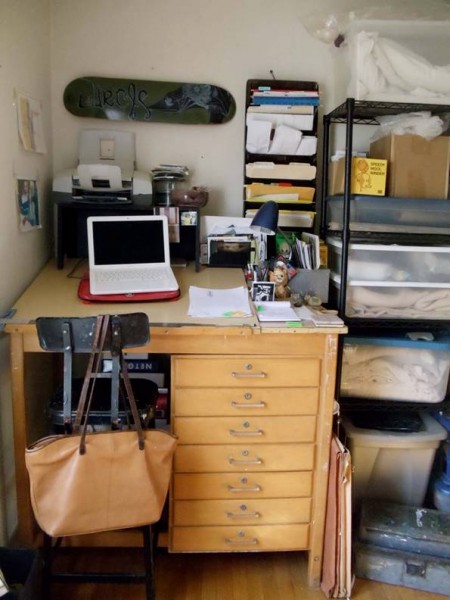
HKPS::How many projects are you usually working on at once? Is this due to space constraints, creative process, organizing systems or other influences?
KG::I am a person who is best stimulated by having many projects going at once…at the moment I have around six to eight projects in the air. This is possible in my space as at the moment it is fairly dynamic. It is limited in ways, but with a house and studio room I am able to make shift anything I’ve needed.
HKPS::How often do you purge, clean or de-clutter your supply stash and space due to space or other constraints?
KG::I try to clean as I work, say at the end of a session. I’m a rather tidy worker so it’s not much of an issue. Organization also helps keep the need to purge or clean to a minimum.
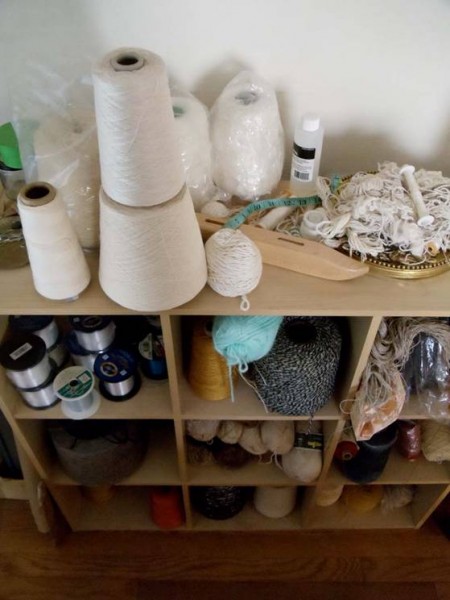
HKPS::Please describe how creative cycles of organization or dis-organization affect your creative process? Are there certain phases of projects that are more or less organized?
KG::I definitely require an organized space to be productive so I try to be consistent with my organization and cleaning.
HKPS::How much thought do you give to your artistic body of work in terms of historic value and the overall legacy you will leave behind? How do you store/archive your work or records?
KG::I store my work in a manner to promote its long-term preservation. All of my textiles are stored in clean muslin, always rolled or flat, then put in clean and clear plastic bins. Almost everything I make is sight specific or changes throughout its existence but if properly cared for could last indefinitely. I have also worked in ways and mediums that yielded work of a more temporal nature. For example, I’ve made castings out of latex that naturally breaks down over time, so at the time of making I document the work thoroughly knowing that it will not last forever. A very important part of any studio practice is consistent photographs of work and process.
My greatest wish is that through seeing how other artist work we can learn from one another. There is no correct system or way of organizing, just what works for YOU. There are as many creative systems as their creative makers! My aim is to highlight these unique makers in each interview. A HUGE thank you to Katie for inviting us into her studio and sharing her personalized systems and how organizing affects her creative process. Please check out her work over at her website and if you live Savannah or are visiting be sure to visit her at the She’s a very talented lady and I’m so glad to have her in our local community!
* Inside the Studio was my brainchild in 2011. There are a lot of popular studio features on the web and in magazines but I’m specifically interested in showing how organizational process influences the artists studio work. These photo’s are not styled and are typical of how the artists working studio looks. I request that each artist leave their space as it would be on a daily basis (just like I ask my clients). This series is meant to highlight how artist REALLY work rather than showing STYLED shots (popular in home and organizing magazines and blogs). I’m sure just like me, you are fascinated by the “behind the scenes” sneak peek into these artists working lives!
